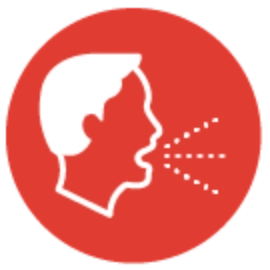
 Tuberculosis
Tuberculosis
 What is it?
What is it?
Tuberculosis, commonly known as TB, is a bacterial infection. It can affect any organ of the body, but most often affects the lungs. Tuberculosis is still common today, with millions of new infections reported globally each year.1,2
 Who is at risk?
Who is at risk?
While tuberculosis occurs worldwide, certain regions are more affected, particularly parts of Africa and Asia including India, Indonesia, China, Philippines, Nigeria, Pakistan and South Africa.1 Even in these areas, the risk of becoming infected is generally low for most travellers. People who do get infected with tuberculosis have usually had extended contact with someone who is infected. You are at a higher risk of contracting tuberculosis if you stay with friends and relatives, are a long-term traveller or healthcare worker or if you come into contact with someone who displays symptoms of the disease, such as coughing and sneezing.2
 What are the symptoms?
What are the symptoms?
Tuberculosis can often occur without any symptoms, so it is important to understand your risk of being infected and take the appropriate precautions to avoid infection. When symptoms do occur, they can vary depending on where in the body the infection is. General symptoms can include fever, night sweats, loss of appetite, weight loss and tiredness. People with tuberculosis often experience a chesty cough, and can occasionally cough up blood.1,2
 How is it spread?
How is it spread?
Tuberculosis is an airborne disease spread directly from person to person. The infection is spread through the air when someone with the disease coughs or sneezes.1,2
 How can it be prevented?
How can it be prevented?
Vaccines are available to help protect against tuberculosis. You may be advised to consider vaccination depending on where you are travelling to and your activities.1,2
You should avoid close contact with people who are known to be suffering from tuberculosis, especially if they are showing any of the symptoms described above.2
 How can it be treated?
How can it be treated?
Tuberculosis is treated using a complicated course of antibiotics over an extended period.1,2
 Where can I get further information?
Where can I get further information?
If you have any questions or concerns about exposure to tuberculosis, please speak to your doctor or a travel health practitioner for more information.
Make sure you contact your GP or travel health practitioner in plenty of time before you travel to discuss the ways you can help to keep yourself healthy whilst away. You should try and contact them at least 4–6 weeks before your trip.
After your trip, you should contact your GP if you develop a fever or notice any other unusual symptoms.
The information provided is a summary that was up to date when this article was published; however, recommendations may be updated from time to time. Please always consult with your doctor, nurse or pharmacist well in advance of travelling.
References
1. Fit for Travel TB. Available at: https://www.fitfortravel.nhs.uk/advice/disease-prevention-advice/tuberculosis.aspx. Accessed: February 2024. 2. Travel Health Pro TB. Available at: https://travelhealthpro.org.uk/disease/182/tuberculosis. Accessed: February 2024.
MAT-XU-2203070(v2.0) | March 2024
For further information please talk to your healthcare professional

